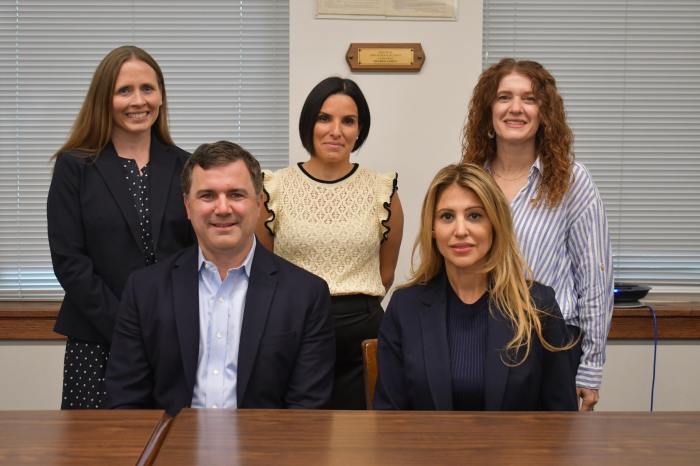
Every year, Great Neck South High students mark the start of classes with a club fair in the gym as a way of welcoming new students, especially the freshman class, and making them feel more comfortable in the building.
But this year’s fair was a little different from the usual, as more than 60 of the school’s clubs joined together to support and participate in the Anti-Defamation League’s (ADL)national student campaign, No Place for Hate. It will be a yearlong project.
“The kids who participated were so happy,” said longtime South teacher Jane Callaghan, who coordinated the event with her colleague, Karen Cantor. The two teachers serve as student government co-advisors.
“Our activities advisor, Kenneth Blumberg, called a meeting and we gave the club kids the usual information,” explained Callaghan, “but we all decided to give each of the clubs a little piece of oak tag in the form of a comic strip bubble and we asked each club to create a bubble that they felt represented the spirit of their club.

“The school newspaper staff (The Southerner) wrote, for example, ‘the only issues we create are newspapers.’ It was representative of the whole spirit of tolerance, understanding and acceptance. That’s the message we wanted to send to the ninth graders, that everybody is welcome here. It doesn’t matter what your ethnicity is, it doesn’t matter what your gender is, it doesn’t matter what your sexual orientation is, but you can be a part of whatever club you choose to join.”
South High is participating in No Place for Hate this year for the first time and has flooded the halls with posters and flyers advertising the ADL program which, according to Callaghan, focuses on “creating a culture of respect.”
The program requires students to sign a pledge that they promise to “gain an understanding of those who are different from myself,” “support those who are targets of hate” and “speak out against prejudice and discrimination.”
Callaghan and Cantor are planning to run a series of events throughout the year based on those concepts. “It’s just a matter of trying to figure out how far we can take each one,” says Callaghan. “The art department, for example, is talking about students creating images that reflect social issues that they feel should be addressed.
“The library has an idea to do a digital citizenship program to answer questions, such as ‘What is your responsibility when you’re online? What is your responsibility when you’re using your phone and when you’re using all those apps?’ We’re going to have speakers come in from the ADL and do a program on micro-aggression, the subtle ways that bias and prejudice are expressed.”
One definite planned activity will take place this Friday, Oct. 9, when students in the ninth grade take part in an anti-bullying lesson.
“We’re going to have our peer educators [more than 20 students] go into the classes and they’ll be addressing questions about why people bully others,” said Callaghan. “We’ll look at bullying and what we can do to stop it. We want the kids to walk away saying, ‘What is it that I can do?’”
Callaghan added that the activity coincides with the Oct. 11 observance of National Coming Out Day, an observance that is important to the LGBT (Lesbian Gay Bisexual Transgender) community. LGBT issues have become more of a point of discussion among teenagers in recent years.
“We’ll explain what the observance is about,” says Callaghan, “but the day’s focus will be on anti-bullying.”
Callaghan and Cantor also plan to educate students about The Dignity for All Students Act (DASA) that became law in all New York State schools in July 2012, as also part of the day.
“It’s a law that guarantees a school environment is free from harassment and discrimination with the intent of producing a nurturing environment that is conducive to learning,” explained Callaghan. “We’ll explain to the kids that not being bullied and being able to be who you are is not just a good thing, it’s also the law. DASA protects all students based on their color, their race, their gender, their religion, even their weight.”
Callaghan is excited about the No Place for Hate initiative. “The kids are doing so many good projects,” she said. “They do so many good things here. We’re really blessed with the quality of students and families that we have. We’re very fortunate. Almost everybody in the school wants to participate in this. It’s something that will evolve as the school year goes on.”

































